Myanmar Flag Meaning
A horizontal tricolor of yellow, green, and red with a large white five-pointed star in the center. Adopted in 2010, the flag symbolizes unity and a new era for Myanmar.
- Continent
- Asia
- Adopted
- 2010
- Ratio
- 2:3
- Colors
- yellow, green, red, white
- Designer
- Adopted by the State Peace and Development Council
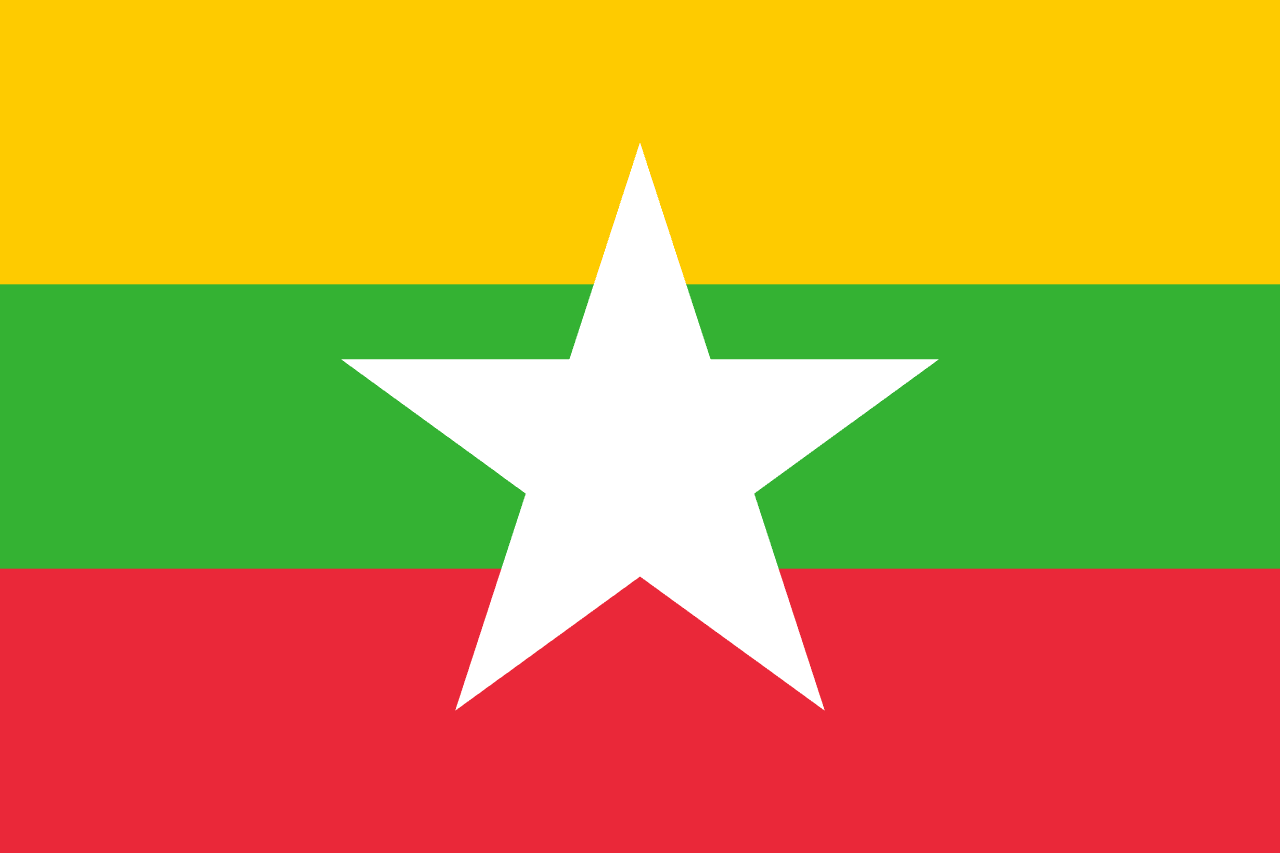
Symbolism
Yellow Stripe: Represents solidarity and the nation’s diversity.
Green Stripe: Symbolizes peace, tranquility, and agriculture.
Red Stripe: Represents courage, determination, and unity.
White Star: Stands for the country’s unity and commitment to a common future.
History
- 1948: Myanmar (then Burma) gained independence from Britain, adopting a blue canton flag with a rice stalk and gear emblem.
- 1974: A new socialist-era flag featuring 14 stars around a cogwheel and rice stalk was introduced.
- 2010: The current tricolor flag was adopted to mark constitutional changes and replace the socialist-era flag.
Trivia
- The flag was introduced alongside Myanmar’s official name change from Burma.
- Its tricolor design is closer in spirit to Pan-African symbolism than traditional Asian flags.
- The previous flags all featured a blue canton, unlike the current bold tricolor.
- The flag’s adoption was controversial, as it was introduced by the military government before elections.
- The star symbolizes unity across Myanmar’s more than 135 recognized ethnic groups.
Related Countries
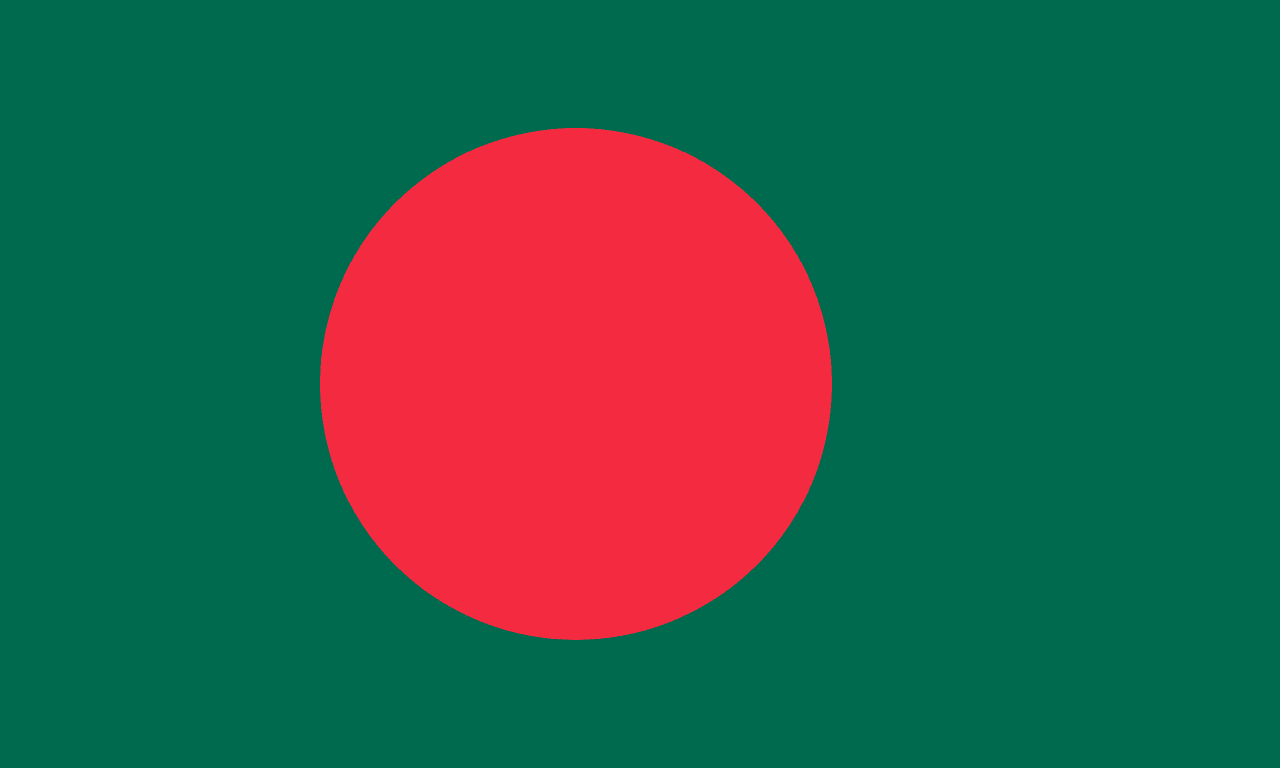
Bangladesh
Asia
A dark green field with a red circle positioned slightly toward the hoist side, representing the lush Bengali landscape and the sun rising over Bengal, as well as the blood shed during the Liberation War of 1971 and the new dawn of independence.
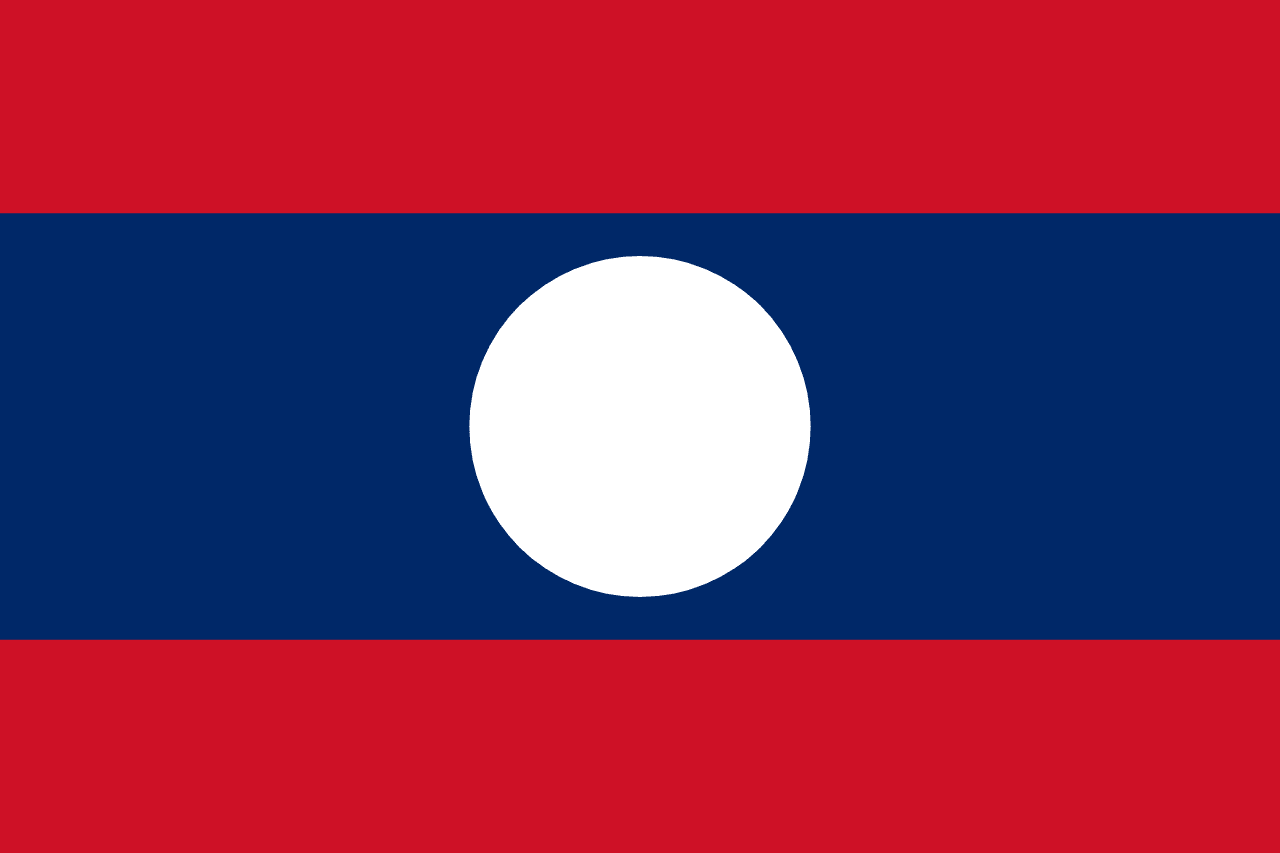
Laos
Asia
Three horizontal stripes of red, blue, and red with a white circle centered on the blue stripe, representing the blood of independence, the Mekong River, and the full moon reflecting unity of the Lao people.
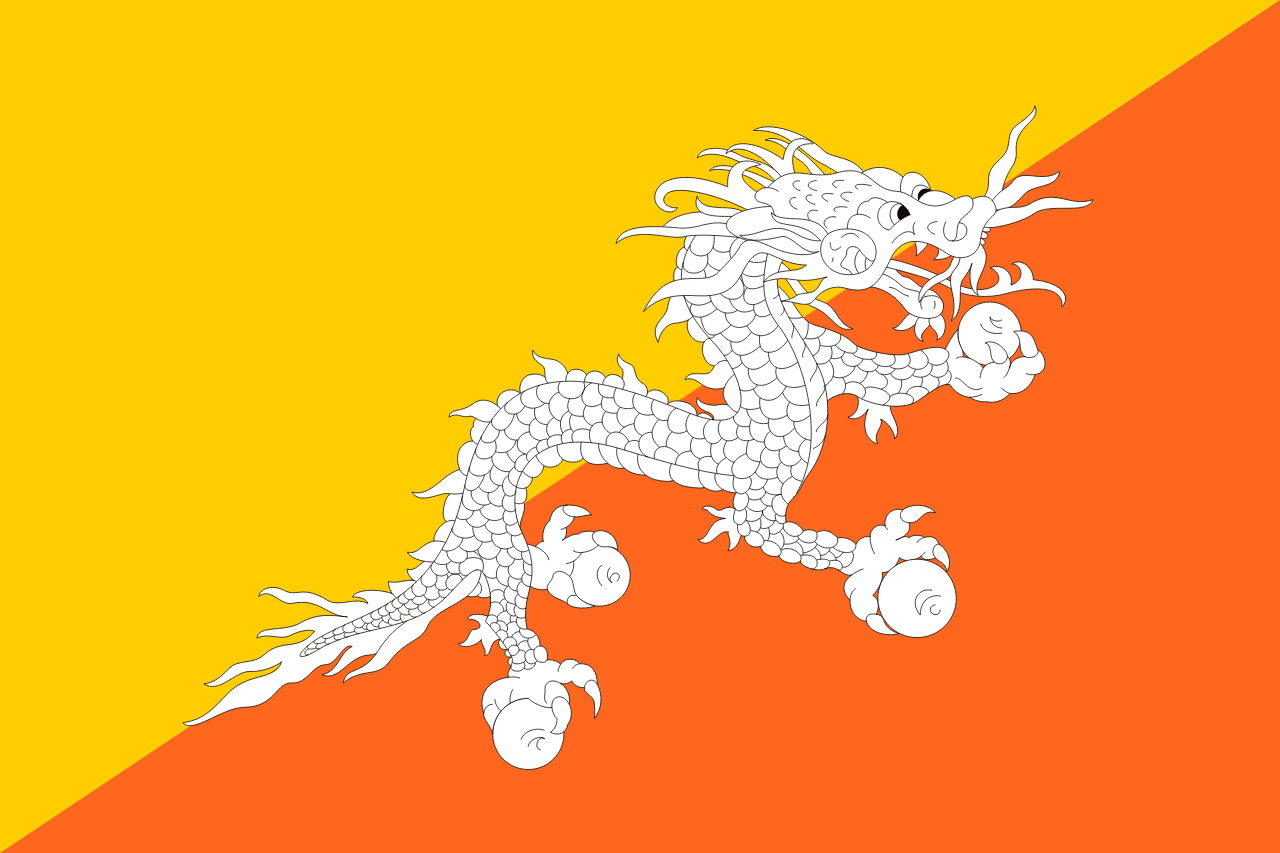
Bhutan
Asia
Divided diagonally with orange in the upper triangle and yellow in the lower triangle, featuring a white dragon (Druk) in the center holding jewels in its claws, representing the spiritual and temporal power of Bhutan and the Thunder Dragon that gives the country its name 'Land of the Thunder Dragon.'

Thailand
Asia
Five horizontal stripes with red at top and bottom, white in the second and fourth positions, and blue in the center, representing the nation and the people, the purity of Buddhism, and the monarchy, designed by King Rama VI during World War I to show solidarity with the Allies.
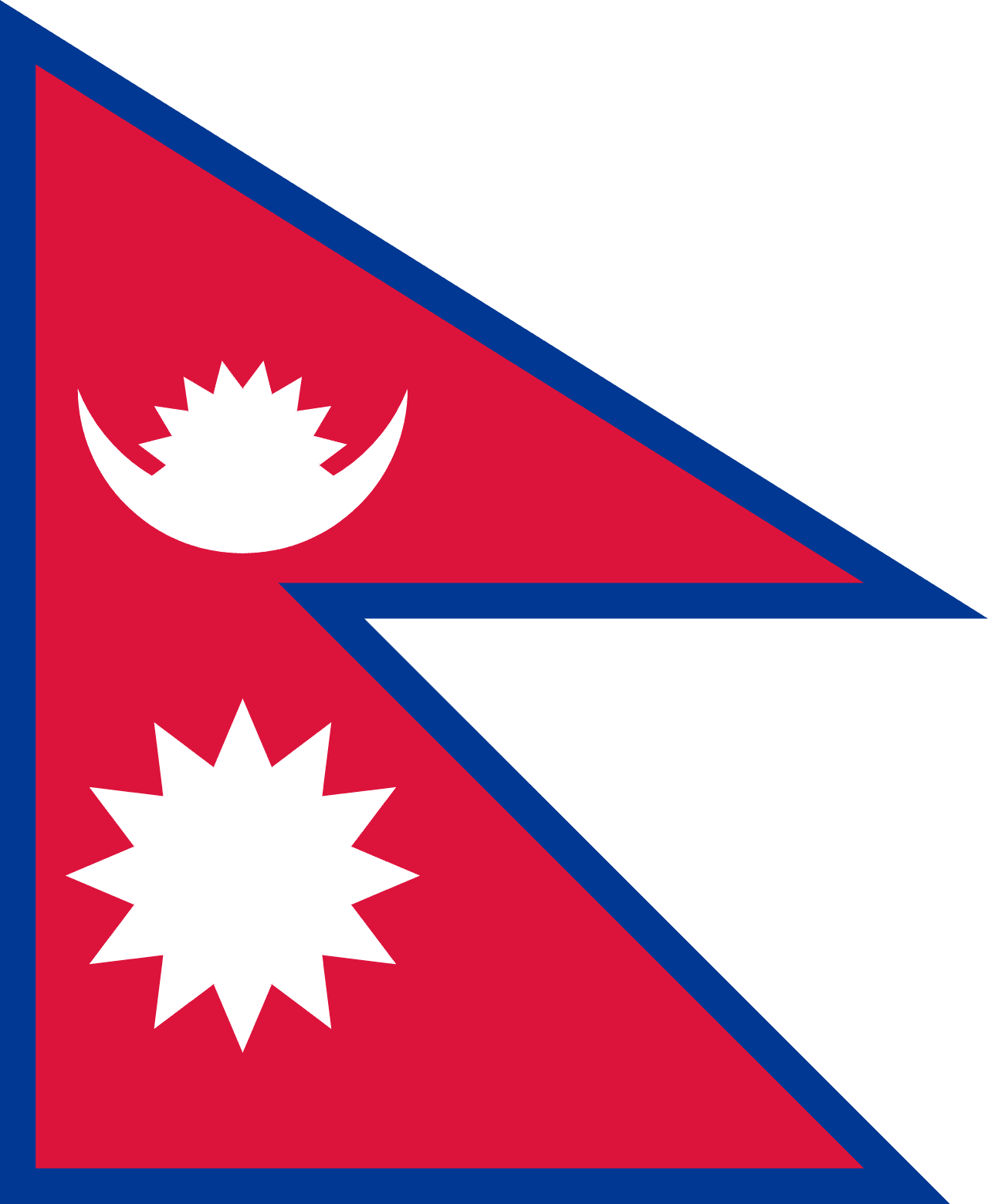
Nepal
Asia
The only national flag that is non-rectangular, composed of two stacked crimson pennons with blue borders, featuring a white moon and a white sun. It reflects Nepal’s distinct identity, culture, and Hindu-Buddhist traditions.
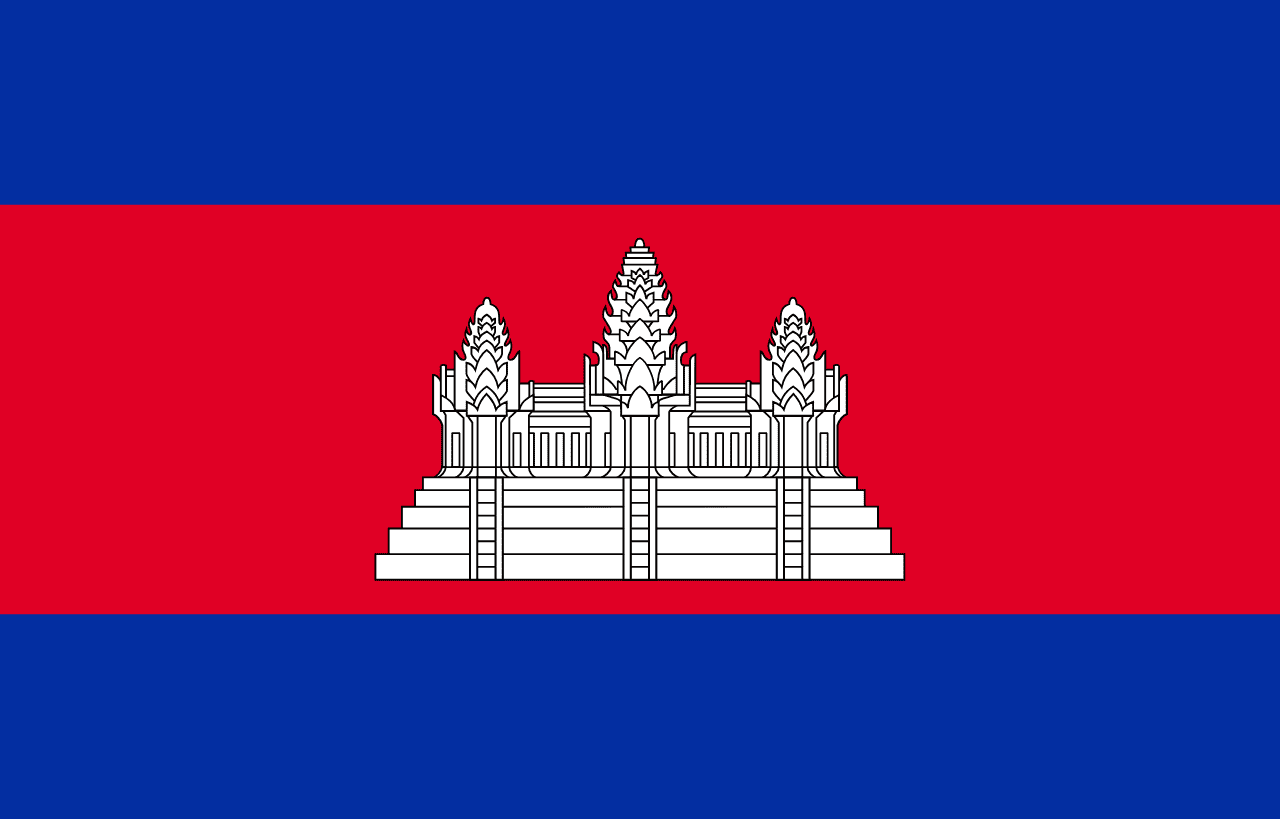
Cambodia
Asia
Three horizontal stripes of blue, red (double width), and blue with a white depiction of Angkor Wat temple in the center, representing the nation, the king, and the sacred temple that symbolizes Cambodia's glorious past and cultural heritage.